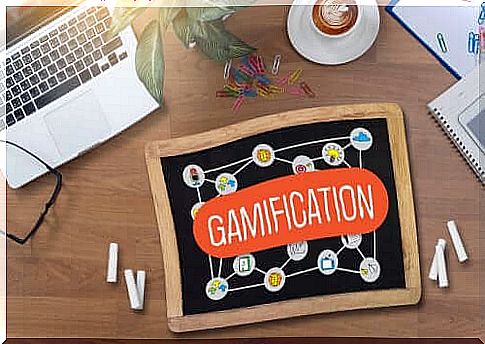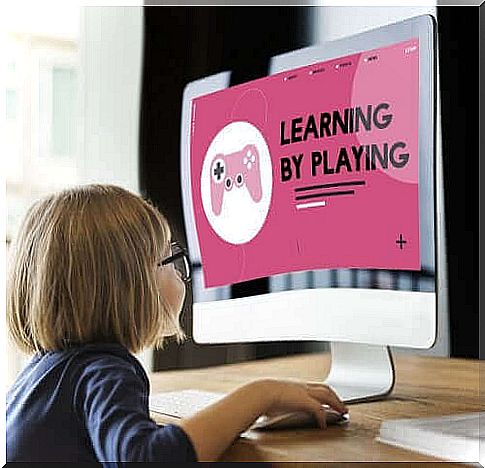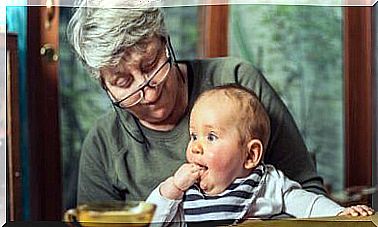Gamification In The Classroom And How You Can Use It

Gamification is the application of playful elements and processes in a context alien to the game. As we learn below, gamification in the classroom is becoming increasingly important for education. Because games are an essential part of culture. And the more playful becomes in learning, the greater the potential for games to transform the experiences of school-age children.
We have talked about the importance of games in children’s learning and development in many of our articles . But today we want to talk about how to use play in an educational setting to raise the children.
There are many different educational methods and opinions on how to go about this. For this reason we have selected some concrete steps you can take to apply gamification in your classroom as well.
Gamification in the classroom: evaluate your students
Identify problems and weaknesses
Identifying your students’ strengths or weaknesses is extremely helpful in determining the best strategies for gamification in the classroom. For example, if you find that your students are turning off their minds or getting distracted during your PowerPoint presentations, you can add interactive elements.
You can set up a kind of “open world” configuration in which children can choose their own path. You can do this by adding a line at the bottom of each slide that allows students to select the next slide.
Take a class poll
Teachers and professors should analyze each class before starting to work with their students. That way, they can determine the best way to motivate them.
The intention should always be to get to know and understand your students’ games. You can then use gamification in the classroom according to the skills and interests of your students.
Define the goals of learning through gamification in the classroom
The playful teaching of teaching material requires clearly defined learning goals. In addition, the learning objectives should include behavioral goals or codes of conduct that will help students understand concepts and develop skills.
An example would be setting a specific learning goal that aims to ensure that students have mastered a particular skill by a certain date. The behavioral goal would be to encourage students and prevent distractions in the classroom.
Structure the game experience that should contribute to learning
Create a different point system
Many students consider their grades to be the most disruptive part of the school experience. For this reason, gamification in the classroom should mean changing the way we present the grading system. Here we should rely on the students’ progress rather than their mistakes.
When it comes to tests and tasks, you can grade your students traditionally or in the form of experience points (XP rating system based on the game World of Warcraft). You can also award Experience Points for completing extracurricular tasks, attending class, or anything else a student can do to help them learn.
Here’s an example: A student who got a 2+ on a test can get 7,500 experience points. These points are added to all the other points that have already been collected during the semester. This way students have a clear point of reference and know how much they have learned and achieved.
Create a step model of learning phases
Didactic topics and units create clear dividing lines for teachers and professors. However, students will likely see them more clearly when they understand they are going through a stage – or level – like in a game. In order to complete one level and advance to the next, students must overcome certain challenges.

To do this, you should define specific tasks, such as requirements that the students must meet in order to advance to a level. If students fail to complete assignments, attend classes, or complete tests, they are not ready to face the challenges associated with the next level.
Gamification in the classroom: having the right resources at hand
Create a manual and organize teams
The creation and distribution of an instruction manual is one way of engaging students in the gamification of learning. Operating instructions, whether digital or tangible, are practically part of every game. They explain how to play a game and make progress, and contain tips and secrets.
For example, our manual should contain the following information:
- How the different learning phases work.
- The types of assignments the students will undertake.
- The new scoring system for gaining experience points, including how students can earn XP points.
- How to earn rewards and what types of rewards are available.
This will help students have a clear point of reference. In addition, they also learn what to do to be successful in a fun learning environment.
Make progress visible
Show your students what progress they have made in a visible way. Showing them what they have achieved since the beginning of the semester is an important social element for classroom gamification. This helps build a sense of community among classmates.
To do this, you could create a bar graph that shows each student’s progress in mastering their skills and then share it with the class. Each time a student scores points for a test or assignment, you can update the bar graph accordingly to include the new XP points.
Offer rewards
To combine playing with learning in a way that will encourage student attention and motivation, think about rewards. Studies show that reward systems in gamified education encourage students to recognize their achievements and develop further.

When you think of most modern video games, you will find that they share a common system. Players receive trophies for completing certain tasks. The harder the task is to complete, the more valuable the reward.
For example, classroom rewards can include small badges or stickers that students earn for completing small, specific assignments.
You can also win major badges for active participation as a topic develops. This encourages and motivates students to achieve further success and develop as a result.
Conclusion on gamification in the classroom
Nowadays, playing in the classroom is a successful method as students are more willing to actively participate in its implementation. They are naturally interested in the game in question and automatically understand and respect the rules and mechanisms.









